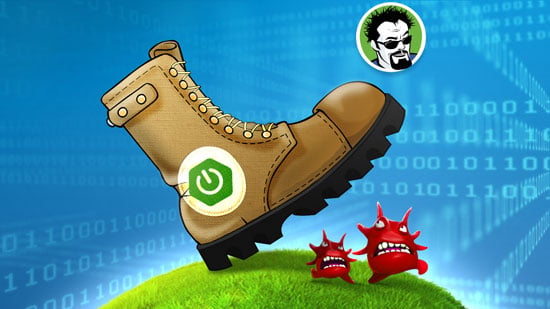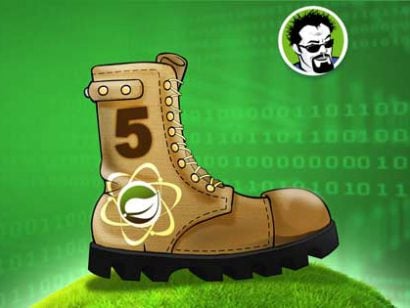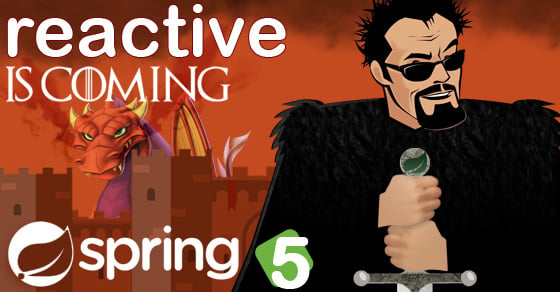Spring Boot Mongo DB Example Application
3 CommentsTranscript
Okay, I’d like do a quick code review of my Spring Boot Mongo DB example application. This is up on github. And you can find it under my repository springframeworkguru/spring-boot-mongodb. (pretty creative name there)
This is an example Spring Bood Application connect to Mongo DB. Not necessarily running in Docker. I connect can connect to any Mongo DB database.
So let’s take a quick look at the code in it, and do a quick overview. I already have it loaded up in IntelliJ.
So, lets start up from the domain up. And what I have is a product and this is a standard mapping class for Spring, mapping out to a Mongo document. So no big mystery there. We just have a product class with an ID, description, price, and image URL. So, nothing terribly exciting there.
Now I do have a couple converters. So I am using a form. A command form, some people call it command object to back it. So this converts it back and forth. So this my product form. Its a command. So really the biggest difference there is that we are treating the ID as a string, because Mongo database type does not really transfer over to the web tier very well. So we do need to convert that back-and-forth.
So next thing to look at our standard Spring MVC controller. This is the controller going to facing out to the web and handling web requests for us.
I did jump up a little bit, and if you’re following along, this pattern is gonna look very very familiar. So, I have a service layer that interacts with my controller layer. So this is my interface for the service. Then there’s my implementation of it. And I am using spring data repositories for this and almost all the wiring in my converter saw a wire in the two dependencies one is the product repository which is provided by spring data and this is the Mongol implementation that I am using and everything is wired up and then finally we have a couple time leaf templates here that we used to show the data so Megan I get into all the all the details here but you can see what’s going on here so nothing
And I am using Spring Data Repositories for this. And also wiring in my converter. I wire in the two dependencies. One is the product repository, which is provided by Spring Data. And this is the Mongo DB implementation that I am using. Everything is wired up.
And then finally we have a couple Thymeleaf templates here that we used to show the data from Mongo. I’m not going to get into all the all the details here. But you can see what’s going on here. so nothing
So nothing too terribly creative here. Its just a quick and dirty to get this working. It is not production grade by any means.
And then let’s take a quick look at the dependencies. Up you can see there on line 17 I am fact running spring boot 1.5.1, and that is the most current release of Spring Boot at the time of recording.
I’m bringing in a couple other dependencies, and these are important. So bring in the Spring Boot Starter Data for Mongo DB. As well as Thymeleaf, web, and of course the test.
And this POM is fairly untouched since I pulled it off of Josh Long’s favorite web site spring.start.io. I’m sorry start.spring.io. And that’s the URL so you can grab this at anytime.
So lets go ahead and take this for spin. What I’m going to do, I have command line ready over here.
And I have Docker there so that’s a standard run command for Docker. Docker run map out the ports for the latest image of Mongo. And the minus D parameter tells it to run it in the background.
So that is now running Docker. Use the command docker ps see that it is running.
And let’s do Docker logs minus F with the image name here. So now you can see that it is running. Let’s bounce over to InteliJ and I am going to start up my Spring Boot application. We can see Spring Boot is initializing. Pretty light project, so its going to come up pretty quick. and is running on tomcat now. Look at the other window you see that I have a new connection established to Docker (to Mongo). I don’t have a log level turned up on this so we won’t see any database activity.
Let’s come over here and to localhost 8080 and that’s going to do a redirect to product list. I did not initialize any data in the database, but I can come and create a new product. Product $22 and url in URL. It’s not doing any data type checking there. It will show me that this is created. This is the Mongo ID that was created. So now, I come back over here I see that it is listed. And should I want to edit it, and say do new product 2222. I am going to submit it, and we see that that is been updated. If I come back to the index again it redirects to product slash list. And I don’t have too much interesting here, but it shows that at that update has been persisted and is getting pulled out of the Mongo database.



































Raul SegherTech
I had a small problem with the connection between Docker and IntelliJ (Windows 10), because the mongo container is not in the local host, it is in a virtual machine and therefore has another IP, which can be found in Kinetic App->mongo container->URL access, to solve it simply use the IP that Kinect App shows inside the application.properties file: “spring.data.mongodb.host=”
Help Please
How to give a local Mongo db connection to the applictaion?
Praveen
By default the application connecting on localhost:27017.
2020-07-02 16:22:32.203 INFO 4972 — [ main] org.mongodb.driver.cluster : Cluster created with settings {hosts=[localhost:27017], mode=SINGLE, requiredClusterType=UNKNOWN, serverSelectionTimeout=’30000 ms’, maxWaitQueueSize=500}
If you want to change it to something else however, you can add following line in src/main/java/resources/application.properties
spring.data.mongodb.uri=mongodb://localhost:27017/test